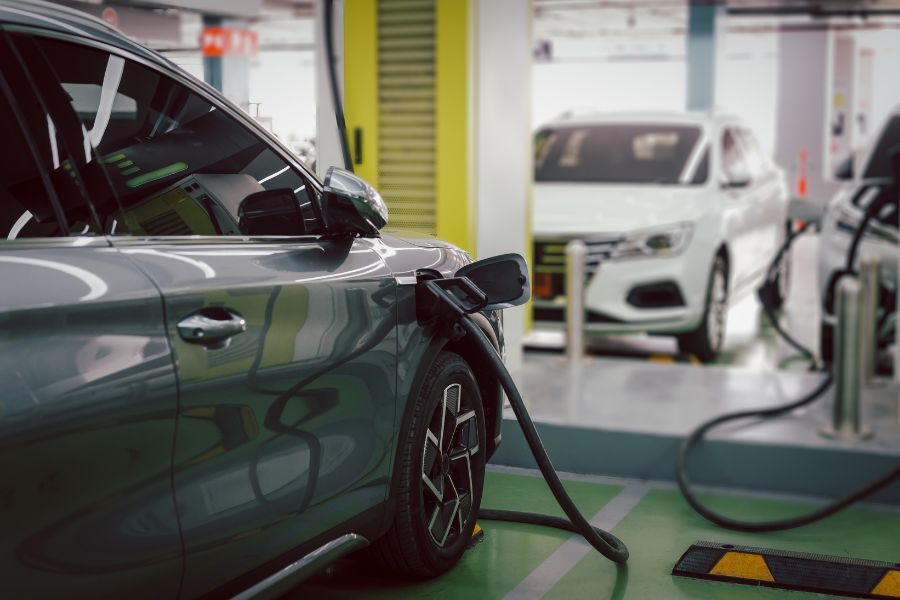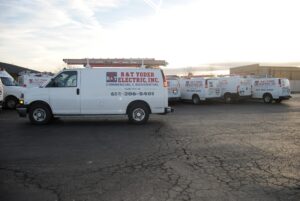
When installing an electric vehicle charger, consider the types available – Level 1 for slow charging, Level 2 for home use, and DC Fast for quick recharges. Position it near your parking spot for efficiency, ensure ventilation, and choose a safe location away from weather. Meet electrical needs with a 240-volt circuit and consult an electrician. Prioritize safety by turning off power, verifying circuits, and following guidelines. Inspect all connections and wear protective gear. Mastering these essentials ensures a successful setup.
Benefits of Installing EV Chargers
Installing EV chargers provides a convenient and efficient way to power up your electric vehicle at home or work. By having an EV charger readily available, you eliminate the need to visit public charging stations, saving you time and ensuring your vehicle is always ready to go. Additionally, charging your electric vehicle at home allows you to take advantage of off-peak electricity rates, reducing your overall charging costs.
Moreover, installing an EV charger increases the value of your property. As electric vehicles become more popular, having a dedicated charging station can make your home more appealing to potential buyers. It also demonstrates your commitment to sustainability and the environment, which is increasingly important to many individuals.
Furthermore, with advancements in technology, modern EV chargers offer features such as remote monitoring, scheduling, and smart connectivity. These capabilities allow you to monitor your charging sessions, optimize charging times, and integrate your EV charger with smart home systems for added convenience and control.
Types of EV Chargers Available
When considering EV chargers for your electric vehicle, it is essential to understand the various types available to meet your specific charging needs efficiently. There are primarily three types of EV chargers: Level 1, Level 2, and DC Fast Chargers.
Level 1 chargers are the most basic and typically come standard with your electric vehicle. These chargers use a standard 120-volt household outlet and provide a charging rate of about 4-5 miles of range per hour. They are suitable for overnight charging or for emergency top-ups.
Level 2 chargers, on the other hand, require a 240-volt outlet, like what your dryer or oven uses. They are faster than Level 1 chargers, providing around 10-60 miles of range per hour, depending on the charger’s power output. Level 2 chargers are ideal for home installations and are commonly found in public charging stations.
DC Fast Chargers are the quickest charging option, delivering 60-80 miles of range in just 20 minutes. These chargers are typically found along highways for long-distance travel and are not commonly installed at homes due to their high power requirements.
Location Considerations for Charger Installation
Consider the available power supply and proximity to your electric vehicle’s parking spot when determining the optimal location for installing an EV charger. The charger should be installed close to the parking spot to minimize the length of the charging cable needed, which helps prevent tripping hazards and reduces energy loss due to cable length. Additionally, ensure the location has adequate ventilation to prevent overheating of the charger during operation. A well-ventilated area helps maintain the charger’s performance and prolong its lifespan.
Furthermore, choose a location that is protected from harsh weather conditions to prevent damage to the charger and ensure safe operation. Installing the charger near an exterior wall with easy access to the electrical panel can simplify the installation process and reduce costs. Consider factors like the distance from the electrical panel, the route of the wiring, and any potential obstacles when selecting the installation location. By carefully considering these factors, you can optimize the location for your EV charger installation.
Electrical Requirements for EV Charger Setup
To ensure proper functioning of your EV charger, it is important to assess the electrical requirements for the setup. The primary consideration is the voltage and amperage capacity of your electrical system. Most EV chargers require a 240-volt circuit and a dedicated 40-amp or higher circuit breaker to operate efficiently. It is crucial to have a qualified electrician evaluate your existing electrical panel to determine if it can support the increased load of an EV charger.
Additionally, the distance between your electrical panel and the desired location of the EV charger will impact the installation. Longer distances may require heavier gauge wiring to prevent voltage drop and ensure optimal charging performance. Consult with your electrician to determine the appropriate wire size based on the distance involved.
Furthermore, grounding and wiring must comply with local electrical codes for safety and performance. It is essential to follow manufacturer guidelines and consult with a professional to ensure a safe and effective EV charger setup.
Safety Tips for Installing EV Chargers
For optimal safety during the installation of EV chargers, ensure all power to the designated area is completely turned off before beginning any work. Before handling any electrical components, use a voltage tester to confirm that there is no electricity flowing to the circuits you will be working on. It is crucial to follow all safety guidelines provided by the charger manufacturer and adhere to local electrical codes. Make sure to wear appropriate personal protective equipment such as insulated gloves and safety goggles to prevent any accidents.
When mounting the charger, ensure it is securely fastened to the wall or mounting surface using the recommended hardware. Use a level to guarantee that the charger is installed correctly and will not pose a hazard. Double-check all connections to guarantee they are tight and properly insulated to prevent any short circuits or electrical faults. After installation, perform a thorough final inspection to ensure everything is in working order before restoring power to the area.










